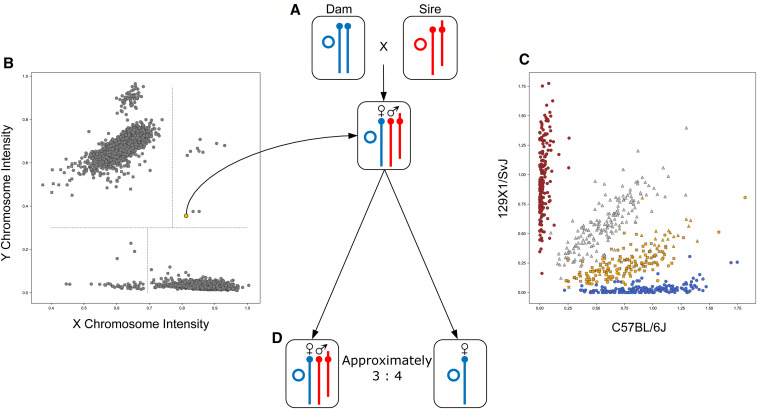Figure 3.
Complex sex chromosome aneuploidy and mosaicism in an F1 male. (A) The panel shows the chromosomal sex and mitochondria complement of the parents and F1 individual. Blue denotes C57BL/6J and red denotes 129X1/SvJ. (B) This panel is a reprint of Figure 1 and was used to classify the F1 male, shown as a yellow circle, as an XXY based on the x- and y-axis intensities (two X chromosomes and a Y chromosome present). This panel also provides evidence of mosaicism for the presence and absence of the Y chromosome (based on the low Y chromosome intensity). (C) This panel provides evidence of mosaicism for the X chromosome and identifies the paternal origin (129X1/SvJ) of the chromosome lost in some cells. The plot presents the intensities of the two alternate alleles for 173 X chromosome markers that are informative between the two parents. Four individuals are shown: a C57BL/6J female in blue, a 129X1/SvJ male in red, a (C57BL/6Jx129X1/SvJ)F1 female in gray, and the F1 male case in yellow. The shapes denote the type of call made by the Illumina software: circles are homozygous A, T, C, or G calls; triangles are H calls; and squares are N calls. (D) This panel shows the proposed sex chromosome complement of the two types of cells present in this F1 male case. This solution explains the observations from previous three panels.

